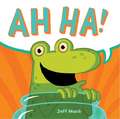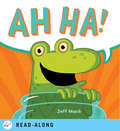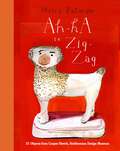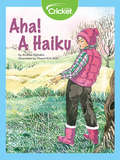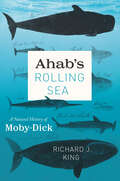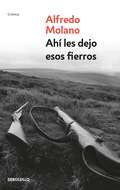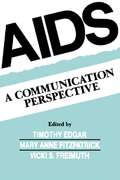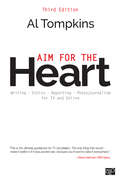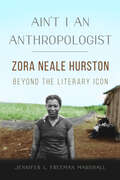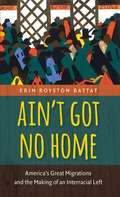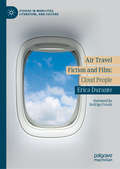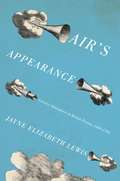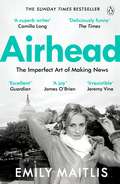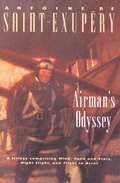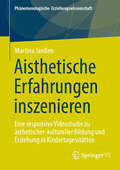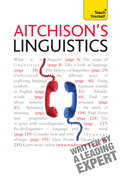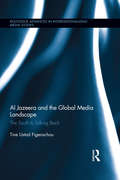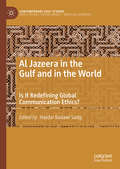- Table View
- List View
Ah Ha!
by Jeff MackFrog is settling in for a relaxing day at the pond. (AAHH.) But wait--there are other creatures at the pond as well. (AH HA!) And some of them are out to get Frog. (AHHH!) Not to worry, Frog gets the last laugh. (HA HA!) Using only two letters, along with many brightly colored and lively illustrations, Jeff Mack brings his hallmark humor to this rollicking book that will leave young readers guessing, laughing, and on the edge of their seats.
Ah Ha!: Ah Ha!
by Jeff MackFrog is settling in for a relaxing day at the pond. (AAHH.) But wait—there are other creatures at the pond as well. (AH HA!) And some of them are out to get Frog. (AHHH!) Not to worry, Frog gets the last laugh. (HA HA!) Using only two letters, along with many brightly colored and lively illustrations, Jeff Mack brings his hallmark humor to this rollicking book that will leave young readers guessing, laughing, and on the edge of their seats. Plus, this is the fixed format version, which will look almost identical to the print version. Additionally for devices that support audio, this ebook includes a read-along setting.
Ah-Ha to Zig-Zag: 31 Objects from Cooper Hewitt, Smithsonian Design Museum
by Maira KalmanMaira Kalman’s exuberant illustrations and humorous commentary bring design history to life in this inspired ABC book that celebrates thirty-one objects from the Cooper Hewitt, in time for its long-awaited reopening. "A. Ah-ha! There you Are." begins Maira Kalman’s joyfully illustrated romp through the treasures of Cooper Hewitt’s design collection. With her signature wit and warm humor, Kalman’s ABC book introduces children and adults to the myriad ways design touches our lives. Posing the question "If you were starting a museum, what would you put in your collection?", Kalman encourages the reader to put pen to paper and send in personal letters—an intimate, interactive gesture to top off her unique tour of the world of design. Objects ranging from a thirteenth-century silk thinking cap to 1889 tin slippers with bows, all the way to Gerrit Rietveld’s Zig-Zag chair are brought to colorful life. Kalman’s hand-lettered text is whimsical and universal in turns, drawing lessons as easily from a worn old boot as a masterpiece of midcentury modernism. Irresistibly, we are led to agree, "Everything is design."
Aha! A Haiku
by Andrea VlahakisLearn more about haiku, which are short poems, written in a style created in Japan more than 400 years ago.
Ahab (Modern Literary Characters)
by Harold BloomCritical extracts by Evert A. Duyckinck, D. H. Lawrence, Lewis Mumford, R. P. Blackmur, W. H. Auden, Lawrance Thompson, Marius Bewley, James Baird, Alfred Kazin, Denis Donoghue, A. R. Humphreys, Joyce Carol Oates, Raney Stanford, Martin Leonard Pops, Ann Douglas, Carolyn L. Karcher, David Simpson, Tony Magistrate, Joseph Allen Boone, David S. Reynolds, Wai-Chee Dimock, Bruce L. Grenberg, and Pamela Schirmeister Critical essays by F. O. Matthiessen, Maurice Friedman, Robert Zoellner, Bainard Cowan, Michael Paul Rogin, William B. Dillingham, Larry J. Reynolds, Neal L. Tolchin, Edward J. Ahearn, and Leo Bersani
Ahab Unbound: Melville and the Materialist Turn
by Meredith Farmer Jonathan D. S. SchroederWhy Captain Ahab is worthy of our fear—and our compassion Herman Melville&’s Captain Ahab is perennially seen as the paradigm of a controlling, tyrannical agent. Ahab Unbound leaves his position as a Cold War icon behind, recasting him as a contingent figure, transformed by his environment—by chemistry, electromagnetism, entomology, meteorology, diet, illness, pain, trauma, and neurons firing—in ways that unexpectedly force us to see him as worthy of our empathy and our compassion. In sixteen essays by leading scholars, Ahab Unbound advances an urgent inquiry into Melville&’s emergence as a center of gravity for materialist work, reframing his infamous whaling captain in terms of pressing conversations in animal studies, critical race and ethnic studies, disability studies, environmental humanities, medical humanities, political theory, and posthumanism. By taking Ahab as a focal point, we gather and give shape to the multitude of ways that materialism produces criticism in our current moment. Collectively, these readings challenge our thinking about the boundaries of both persons and nations, along with the racist and environmental violence caused by categories like the person and the human.Ahab Unbound makes a compelling case for both the vitality of materialist inquiry and the continued resonance of Melville&’s work.Contributors: Branka Arsić, Columbia U; Christopher Castiglia, Pennsylvania State U; Colin Dayan, Vanderbilt U; Christian P. Haines, Pennsylvania State U; Bonnie Honig, Brown U; Jonathan Lamb, Vanderbilt U; Pilar Martínez Benedí, U of L&’Aquila, Italy; Steve Mentz, St. John&’s College; John Modern, Franklin and Marshall College; Mark D. Noble, Georgia State U; Samuel Otter, U of California, Berkeley; Donald E. Pease, Dartmouth College; Ralph James Savarese, Grinnell College; Russell Sbriglia, Seton Hall U; Michael D. Snediker, U of Houston; Matthew A. Taylor, U of North Carolina at Chapel Hill; Ivy Wilson, Northwestern U.
Ahab's Rolling Sea: A Natural History of "Moby-Dick"
by Richard J. KingAlthough Herman Melville’s Moby-Dick is beloved as one of the most profound and enduring works of American fiction, we rarely consider it a work of nature writing—or even a novel of the sea. Yet Pulitzer Prize–winning author Annie Dillard avers Moby-Dick is the “best book ever written about nature,” and nearly the entirety of the story is set on the waves, with scarcely a whiff of land. In fact, Ishmael’s sea yarn is in conversation with the nature writing of Emerson and Thoreau, and Melville himself did much more than live for a year in a cabin beside a pond. He set sail: to the far remote Pacific Ocean, spending more than three years at sea before writing his masterpiece in 1851. A revelation for Moby-Dick devotees and neophytes alike, Ahab’s Rolling Sea is a chronological journey through the natural history of Melville’s novel. From white whales to whale intelligence, giant squids, barnacles, albatross, and sharks, Richard J. King examines what Melville knew from his own experiences and the sources available to a reader in the mid-1800s, exploring how and why Melville might have twisted what was known to serve his fiction. King then climbs to the crow’s nest, setting Melville in the context of the American perception of the ocean in 1851—at the very start of the Industrial Revolution and just before the publication of On the Origin of Species. King compares Ahab’s and Ishmael’s worldviews to how we see the ocean today: an expanse still immortal and sublime, but also in crisis. And although the concept of stewardship of the sea would have been entirely foreign, if not absurd, to Melville, King argues that Melville’s narrator Ishmael reveals his own tendencies toward what we would now call environmentalism. Featuring a coffer of illustrations and an array of interviews with contemporary scientists, fishers, and whale watch operators, Ahab’s Rolling Sea offers new insight not only into a cherished masterwork and its author but also into our evolving relationship with the briny deep—from whale hunters to climate refugees.
Ahí les dejo esos fierros
by Alfredo Molano BravoUn libro imprescindible para desentrañar los orígenes y las más profundas realidades y motivaciones de los distintos procesos de desmovilización y reincorporación en Colombia. Cuando la guerra se extingue en sus propios métodos, los medios empiezan a transformarse. Cuando las promesas se diluyen, las luchas se convierten en ficciones. Y cuando las armas comienzan a ser cada día más pesadas, se regresa a la búsqueda de la identidad sin ellas. Alfredo Molano les da voz a dos personajes que nunca antes había abordado: el ideólogo, perteneciente a la clase media trabajadora y profesional, cuya lucha revolucionaria se gestó en las aulas universitarias a mediados del siglo XX, y el militante de los grupos paramilitares, producto de la división de la sociedad y la complejidad del conflicto colombiano. Seis historias de vida desgarradoras, historias de desmovilización, reencuentros y desarraigo; desde la contradicción de la selva hasta la soledad del despojo.
Aids: A Communication Perspective (Routledge Communication Series)
by Timothy Edgar Vicki S. Freimuth Mary Anne FitzpatrickPrevention through appropriate behavior is the best weapon available to fight further spread of HIV infection. However, individuals take necessary actions to prevent diseases such as AIDS only when they are properly informed and they feel motivated to respond to the information they possess. In order to achieve a clearer understanding of these two facets of the prevention process, this book examines the interplay of the messages individuals receive about AIDS at the public level and the messages exchanged between individuals at the interpersonal level. The specific purpose of the book is to provide a theoretical and conceptual foundation for understanding the pragmatic concerns related to the AIDS crisis in the United States and other parts of the world. The book represents the first systematic examination of how theory informs our understanding of AIDS and communication processes. Contributors explore the issues from a variety of theoretical and conceptual viewpoints. Their goal is to stimulate thought which will lead to the pragmatic application of the ideas presented. The chapters focus on four general communication concerns: * interpersonal interaction as it relates to choices individuals make about safer sex practices, * theory and practice of public campaigns about AIDS, * intercultural issues, and * critical and descriptive approaches for understanding news coverage of AIDS.
Aim for the Heart: Write, Shoot, Report and Produce for TV and Multimedia
by Al TompkinsAl Tompkins teaches students about broadcast journalism using a disarmingly simple truth—if you aim for the heart with the copy you write and the sound and video you capture, you will compel your viewers to keep watching. With humor, honesty, and directness, award-winning journalist and author Al Tompkins bottles his years of experience and insight in a new Third Edition that offers students the fundamentals they need to master journalism in today’s constantly evolving media environment, with practical know-how they can immediately put to use in their careers. Aim for the Heart is as close as you can get to spending a week in one of Tompkins’s training sessions that he has delivered in newsrooms around the world, from which students: • Learn how to build compelling characters who connect with the audience • Write inviting leads • Get memorable soundbites • See how to light, crop, frame, and edit compelling videos • Learn how to leverage social media to engage audiences • Gain critical thinking skills that move your story from telling the "what" to telling the "why"
Aim for the Heart: Write, Shoot, Report and Produce for TV and Multimedia
by Al TompkinsAl Tompkins teaches students about broadcast journalism using a disarmingly simple truth—if you aim for the heart with the copy you write and the sound and video you capture, you will compel your viewers to keep watching. With humor, honesty, and directness, award-winning journalist and author Al Tompkins bottles his years of experience and insight in a new Third Edition that offers students the fundamentals they need to master journalism in today’s constantly evolving media environment, with practical know-how they can immediately put to use in their careers. Aim for the Heart is as close as you can get to spending a week in one of Tompkins’s training sessions that he has delivered in newsrooms around the world, from which students: • Learn how to build compelling characters who connect with the audience • Write inviting leads • Get memorable soundbites • See how to light, crop, frame, and edit compelling videos • Learn how to leverage social media to engage audiences • Gain critical thinking skills that move your story from telling the "what" to telling the "why"
Ain't I an Anthropologist: Zora Neale Hurston Beyond the Literary Icon (New Black Studies Series)
by Jennifer L. Freeman MarshallIconic as a novelist and popular cultural figure, Zora Neale Hurston remains underappreciated as an anthropologist. Is it inevitable that Hurston’s literary authority should eclipse her anthropological authority? If not, what socio-cultural and institutional values and processes shape the different ways we read her work? Jennifer L. Freeman Marshall considers the polar receptions to Hurston’s two areas of achievement by examining the critical response to her work across both fields. Drawing on a wide range of readings, Freeman Marshall explores Hurston’s popular appeal as iconography, her elevation into the literary canon, her concurrent marginalization in anthropology despite her significant contributions, and her place within constructions of Black feminist literary traditions. Perceptive and original, Ain’t I an Anthropologist is an overdue reassessment of Zora Neale Hurston’s place in American cultural and intellectual life.
Ain’t Got No Home
by Erin Royston BattatMost scholarship on the mass migrations of African Americans and southern whites during and after the Great Depression treats those migrations as separate phenomena, strictly divided along racial lines. In this engaging interdisciplinary work, Erin Royston Battat argues instead that we should understand these Depression-era migrations as interconnected responses to the capitalist collapse and political upheavals of the early twentieth century. During the 1930s and 1940s, Battat shows, writers and artists of both races created migration stories specifically to bolster the black-white Left alliance. Defying rigid critical categories, Battat considers a wide variety of media, including literary classics by John Steinbeck and Ann Petry, "lost" novels by Sanora Babb and William Attaway, hobo novellas, images of migrant women by Dorothea Lange and Elizabeth Catlett, popular songs, and histories and ethnographies of migrant shipyard workers. This vibrant rereading and recovering of the period's literary and visual culture expands our understanding of the migration narrative by uniting the political and aesthetic goals of the black and white literary Left and illuminating the striking interrelationship between American populism and civil rights.
Air & Light & Time & Space: How Successful Academics Write
by Helen SwordFrom the author of Stylish Academic Writing comes an essential new guide for writers aspiring to become more productive and take greater pleasure in their craft. Helen Sword interviewed 100 academics worldwide about their writing background and practices and shows how they find or create the conditions to get their writing done.
Air Travel Fiction and Film: Cloud People (Studies in Mobilities, Literature, and Culture)
by Erica DuranteAir Travel Fiction and Film: Cloud People explores how, over the past four decades, fiction and film have transformed our perceptions and representations of contemporary air travel. Adopting an interdisciplinary approach, the book provides a comprehensive analysis of a wide range of international cultural productions, and elucidates the paradigms and narratives that constitute our current imaginary of air mobility. Erica Durante advances the hypothesis that fiction and film have converted the Airworld—the world of airplanes and airport infrastructures—into a pivotal anthropological place that is endowed with social significance and identity, suggesting that the assimilation of the sky into our cultural imaginary and lifestyle has metamorphosed human society into “Cloud People.” In its examination of the representations of air travel as an epicenter of today’s world, the book not only illustrates a novel perspective on contemporary fiction, but fills an important gap in the study of globalization within literary and film studies.
Air Words: Writing for Broadcast News
by John HewittAn introductory text for broadcast newswriting, with numerous exercises and examples illustrating broadcast news style. Defines and explains standard industry formats, rules, and procedures, and covers fact checking, ethics, script formats, shifting from print to broadcast, writing leads, interviews, aspects of TV writing, and copyediting and producing. Includes chapter glossaries. This second edition discusses technology advances such as wire capture and producing from CRTs. Lacks a bibliography. Annotation c. by Book News, Inc., Portland, Or.
Air's Appearance: Literary Atmosphere in British Fiction, 1660–1794
by Jayne Elizabeth LewisIn Air’s Appearance, Jayne Elizabeth Lewis enlists her readers in pursuit of the elusive concept of atmosphere in literary works. She shows how diverse conceptions of air in the eighteenth century converged in British fiction, producing the modern literary sense of atmosphere and moving novelists to explore the threshold between material and immaterial worlds. Air’s Appearance links the emergence of literary atmosphere to changing ideas about air and the earth’s atmosphere in natural philosophy, as well as to the era’s theories of the supernatural and fascination with social manners—or, as they are now known, “airs.” Lewis thus offers a striking new interpretation of several standard features of the Enlightenment—the scientific revolution, the decline of magic, character-based sociability, and the rise of the novel—that considers them in terms of the romance of air that permeates and connects them. As it explores key episodes in the history of natural philosophy and in major literary works like Paradise Lost, “The Rape of the Lock,” Robinson Crusoe, and The Mysteries of Udolpho, this book promises to change the atmosphere of eighteenth-century studies and the history of the novel.
Airhead: The Imperfect Art of Making News
by Emily MaitlisFEATURING EMILY MAITLIS' GROUNDBREAKING INTERVIEW WITH PRINCE ANDREWThe news has never been more prominent - but are we getting the full story? Newsnight presenter Emily Maitlis gives us a behind-the-scenes look at some of the biggest news stories and interviews of recent years 'Smart, funny and brilliantly told' Elizabeth Day 'Revelatory, riveting and frequently hilarious' James O'Brien 'Absolutely irresistible' Jeremy Vine ________ In this no holds barred account of life in the seconds before, during and after going on air, Newsnight presenter, leading journalist, and queen of the side eye Emily Maitlis gives us the insider info on what we don't get to see on-screen. Giving us the inside scoop on her interviews with everyone from Emma Thompson to Russell Brand, and Donald Trump to Tony Blair, as well as covering news stories such as President Clinton's affairs, Boris Johnson's race to PM, Grenfell, #MeToo, and that interview with Prince Andrew. Airhead is a brilliant exposé of the moments that never make the news. From News Presenter of the Year and 2020 BAFTA nominee ________ 'Funny and subtly smart' GUARDIAN, BOOKS OF THE YEAR DAILY MAIL BOOKS OF THE YEAR 'Deliciously funny . . . Irresistible' The Times '[Emily] is so absolutely of the moment' Evening Standard
Airman's Odyssey: Wind, Sand and Stars; Night Flight; and Flight to Arras
by Antoine de Saint-ExupéryThree classic adventure stories, reminders of both the romance and the reality of the pioneer era of aviation: Night Flight; Wind, Sand and Stars; and Flight to Arras. Introduction by Richard Bach. Translated by Lewis Galantière and Stuart Gilbert.
Aisthetische Erfahrungen inszenieren: Eine responsive Videostudie zu ästhetischer-kultureller Bildung und Erziehung in Kindertagesstätten (Phänomenologische Erziehungswissenschaft #16)
by Martina JanßenDieses Buch präsentiert eine phänomenologisch orientierte Untersuchung von aisthetischen Erfahrungen von Kindern aus dem Geist der Bildungs- und Erziehungstheorie. Auf der Grundlage einer groß angelegten Videoanalyse von Bildungsangeboten in Kindertagesstätten werden Zeigepraxen der Fachkräfte mit aisthetischen Erfahrungen von Kindern in Verbindung gesetzt und diese als bildende Erfahrungen ausgewiesen. Zudem werden in detaillierten Beschreibungen und Interpretationen die komplexen Wechselwirkungen im leiblichen, sozialen, dinglich-materialen, räumlichen und temporalen Erfahrungsfeld empirisch und theoretisch eingeholt. Auf dieser Grundlage wird ein Beitrag für eine phänomenologische und praxeologische Pädagogik der frühen Bildung und Erziehung geleistet, die für Forscher*innen, Studierende und Praktiker*innen von Interesse sein kann. Die Autorin Martina Janßen ist promovierte Erziehungswissenschaftlerin, bildende Künstlerin und Diplom-Sozialpädagogin. Als Vertretungsprofessorin an der Fakultät für Angewandte Sozialwissenschaften, Fachhochschule Erfurt (09/21 bis 09/24) lehrte sie in den Studiengängen der Sozialen Arbeit und der Kindheitspädagogik. Ihre Arbeits- und Forschungsschwerpunkte sind Theorien und Philosophien der Bildung und Erziehung, Pädagogik der frühen Kindheit, ästhetisch-kulturelle Bildungsprozesse und künstlerisch-ästhetische Forschung, Leiblichkeit und Bewegung sowie Videoanalyse.
Aitchison's Linguistics: A practical introduction to contemporary linguistics
by Jean AitchisonThis classic book is a straightforward introduction to linguistics which attempts to answer two fundamental questions: 'What is language?' and 'How does language work?' It outlines the scope of linguistics, explaining basic concepts and essential terminology with examples drawn mainly from English. Sound patterning, syntax and meaning - the inner core of linguistics - are discussed simply and clearly, as are the rapidly growing areas of pragmatics, sociolinguistics, psycholinguistics and stylistics. You will find this contemporary, easy-to-read book essential to broadening your understanding of the subtleties and power of language.NOT GOT MUCH TIME?One, five and ten-minute introductions to key principles to get you started.AUTHOR INSIGHTSLots of instant help with common problems and quick tips for success, based on the author's many years of experience.TEST YOURSELFTests in the book and online to keep track of your progress.EXTEND YOUR KNOWLEDGEExtra online articles at www.teachyourself.com to give you a richer understanding of linguistics.FIVE THINGS TO REMEMBERQuick refreshers to help you remember the key facts.TRY THISInnovative exercises illustrate what you've learnt and how to use it.
Aitchison's Linguistics: Teach Yourself (TY English Reference)
by Jean AtchisonThis classic book is a straightforward introduction to linguistics which attempts to answer two fundamental questions: 'What is language?' and 'How does language work?' It outlines the scope of linguistics, explaining basic concepts and essential terminology with examples drawn mainly from English. Sound patterning, syntax and meaning - the inner core of linguistics - are discussed simply and clearly, as are the rapidly growing areas of pragmatics, sociolinguistics, psycholinguistics and stylistics. You will find this contemporary, easy-to-read book essential to broadening your understanding of the subtleties and power of language. NOT GOT MUCH TIME? One, five and ten-minute introductions to key principles to get you started. AUTHOR INSIGHTS Lots of instant help with common problems and quick tips for success, based on the author's many years of experience. TEST YOURSELF Tests in the book and online to keep track of your progress. EXTEND YOUR KNOWLEDGE Extra online articles at www.teachyourself.com to give you a richer understanding of linguistics. FIVE THINGS TO REMEMBER Quick refreshers to help you remember the key facts. TRY THIS Innovative exercises illustrate what you've learnt and how to use it.
Ake: The Years of Childhood
by Wole SoyinkaA dazzling memoir of an African childhood from Nobel Prize-winning Nigerian novelist, playwright, and poet Wole Soyinka. Aké: The Years of Childhood gives us the story of Soyinka's boyhood before and during World War II in a Yoruba village in western Nigeria called Aké. A relentlessly curious child who loved books and getting into trouble, Soyinka grew up on a parsonage compound, raised by Christian parents and by a grandfather who introduced him to Yoruba spiritual traditions. His vivid evocation of the colorful sights, sounds, and aromas of the world that shaped him is both lyrically beautiful and laced with humor and the sheer delight of a child's-eye view. A classic of African autobiography, Aké is also a transcendantly timeless portrait of the mysteries of childhood.
Al Jazeera and the Global Media Landscape: The South is Talking Back (Routledge Advances in Internationalizing Media Studies)
by Tine Ustad FigenschouThis book analyzes how and why Al Jazeera English (AJE) became the channel of choice to understand the massive protests across the Arab world 2011. Aiming to explain the ‘Al Jazeera moment,’ it tracks the channel’s bumpy road towards international recognition in a longitudinal, in-depth analysis of the channel’s editorial profile and strategies. Studying AJE from its launch in mid-November 2006 to the ‘Arab Spring’, it explains and problematizes the channel’s ambitious editorial agenda and strategies, examines the internal conflicts, practical challenges and minor breakthroughs in its formative years. The Al Jazeera-phenomenon has received massive attention, but it remains under-researched. The growth of transnational satellite television has transformed the global media landscape into a complex web of multi-vocal, multimedia and multi-directional flows. Based on a combination of policy-, production- and content analysis of comprehensive empirical data the book offers an innovative perspective on the theorization of global news contra-flows. By problematizing the distinctive characteristics of AJE, it examines the strategic motivation behind the channel and the ways in which its production processes and news profile are meant to be different from its Anglo-American competitors. These questions underscore a central nexus of the book: the changing relationship between transnational satellite news and power.
Al Jazeera in the Gulf and in the World: Is It Redefining Global Communication Ethics? (Contemporary Gulf Studies)
by Haydar Badawi SadigThis book examines the deeper meaning of the advent of the Al Jazeera Media Network with regard to ongoing debates on global communication ethics, not only in the global public sphere but also in terms of its influence on new non-Western approaches to media ethics. Rather than simply calling for international perspectives on media ethic is a unique and significant addition to the literature on the topic. The book investigates whether Al Jazeera’s vision, mission, and operations are actually inspired by the New World Information Order debates over contra-flow and hegemony. Further, the book identifies ways of developing new non-Western approaches to global communication ethics, as it suggests injecting more cosmopolitanism in global news reporting and commentary.
